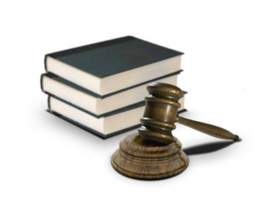
Read This Before Filling out Bankruptcy Forms

Bankruptcy Petition
The initial petition for filing bankruptcy is not too complex that average Americans can't figure it out. Just the same, the exactitude of information the law demands may make the decision to hire an attorney or petition preparer to take care of this task a prudent one.
The data requested in the B-1 Voluntary Petition can be grouped loosely into two categories. The first is standard identifying information such as name, address and Social Security number. The second is those details that are of higher relevance to the subject of bankruptcy and includes all debts/creditors and the amounts owed for/to them.
Upon notice that a debtor has filed for bankruptcy, it is not simply enough for a creditor to show up at the confirmation hearing and demand a sum be paid. Much as borrowers have their clear duties as they appear before a bankruptcy court, lenders have their own obligations to be completed, or else they may not earn even part of the sum to which they feel entitled.
Primary among these obligations is the filing of the B-10 Proof of Claim form. On the actual form, there are a number of important details to nail down. Creditors should be clear about the nature of their relationship with debtors and should be exact about monies loaned. They should also be specific about whether a claim is secured or unsecured.
Bankruptcy Plan Forms
Without a viable bankruptcy plan, petitioners will not be able to renegotiate the terms of their debts with creditors and get the relief they sorely need. However, without the right bankruptcy plan forms, creditors will not be able to decide if such a plan is right for them and the courts will not be able to correctly process the documents they do receive.
In particular, Forms B-13, B-14, and B-15 are designed to address bankruptcy plans brought before the representative of the U.S. Trustee and others. The two bookend forms in this trio are fairly basic ones and require a signature of authorization from an appointed judge.
They are used as confirmation pieces for the disclosure statement submitted by the debtor and the confirmation of the plan approved by participating creditors. Of course, this assumes that the plan is approved at all.
In some instances, creditors and other interested parties will be requested to vote on whether they accept or reject the scheme outlined by the applicant through the B-14 Ballot for Accepting or Rejecting Plan. If the plan is rejected based on unsuitability for the majority of creditors or evidence of intentional wrongdoing on the debtor's part, another round of voting may be necessary or the case could be dismissed completely.
Disclosure Statement
As noted, part of bankruptcy plan confirmation is the prior approval of the disclosure statement by a bankruptcy court with jurisdiction.
Discharge of Debtor
The ultimate goal of the personal bankruptcy filer is the discharge of all remaining debts. Through the Bankruptcy Code, this much is more than possible, especially in Chapter 7.



















